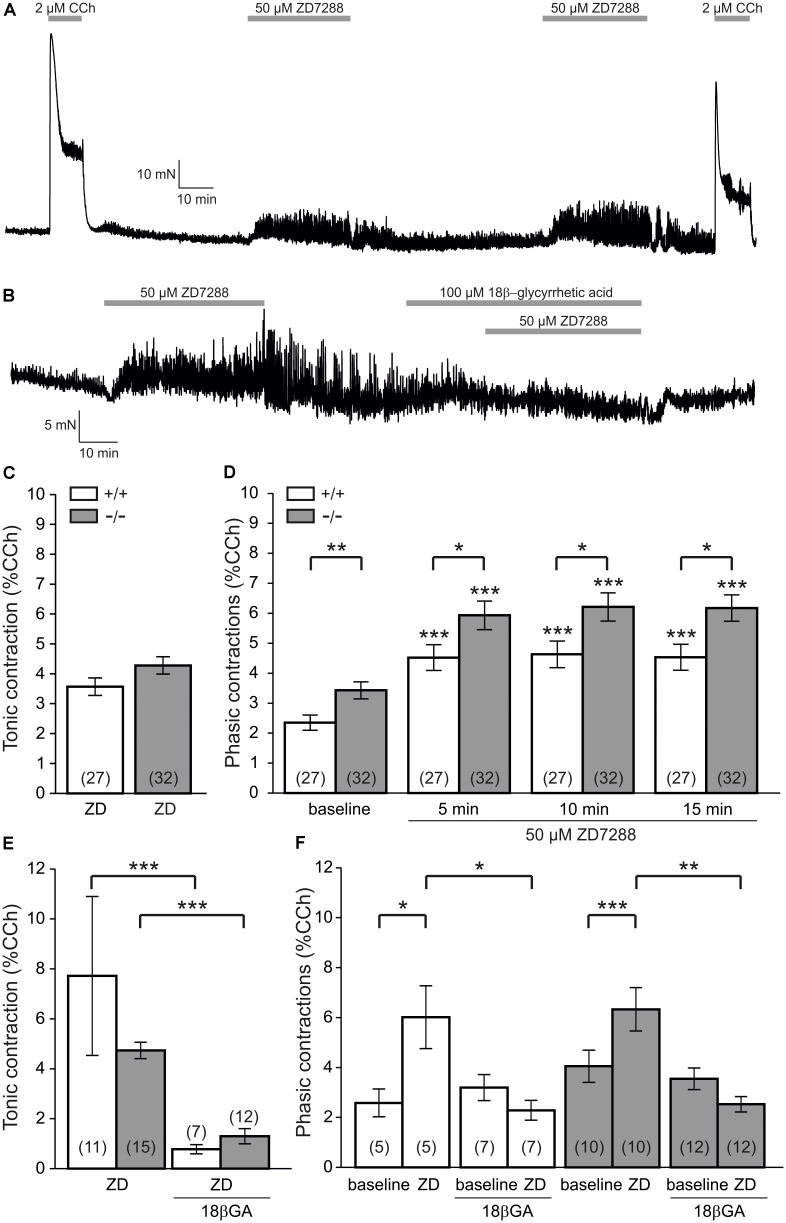FIGURE 6.
HCN1 contributes to the ZD7288-induced enhancement of phasic contractions. (A) Sample force recording showing the carbachol (CCh) and ZD7288-evoked response in a mouse bladder specimen. (B) Sample trace showing that pre-treatment with 18β-GA largely inhibited the ZD7288-induced tonic contraction as well as the enhancement of phasic contractions. (C) Tonic contractions by ZD7288 were not different between HCN1-deficient mice and wildtype littermates. (D) ZD7288 significantly enhanced phasic contraction amplitudes in both HCN1-knockout mice and controls (P < 0.001, Wilcoxon signed rank test). However, this increase was significantly more pronounced in HCN1-deficient mice (P < 0.05, Mann–Whitney test). Note that phasic contraction amplitudes were significantly higher in HCN1-knockout mice under baseline conditions (i.e., before ZD7288 application, P < 0.01, Mann–Whitney U-test). (E) Tonic contractions were significantly reduced by 18β-GA (P < 0.001, Mann–Whitney U-test), but without differences between HCN1+/+ and HCN1-/- genotypes. (F) The ZD7288-induced enhancement of phasic contractions was significantly sensitive to 18β-GA, again similar in both genotypes.

